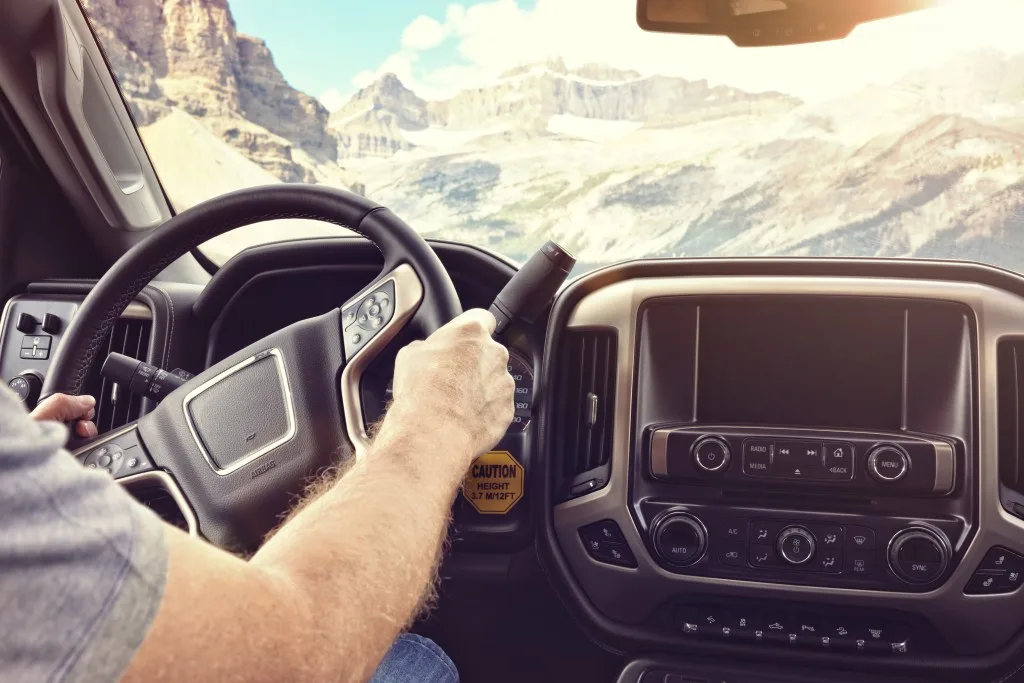Is It Safe to Use Cruise Control When Towing?
Your vehicle comes with many safety features like cruise control, tow/haul mode, and more. These can make your towing experience easier and safer. However, can you use them all at the same time?
Will you damage your vehicle as a result?
Should you use cruise control when towing a trailer?
Let’s take a look.
Is It Safe to Use Cruise Control When Towing?
As long as you’re within the towing parameters of your vehicle, using cruise control should be ok. Similar to everyday driving with cruise control, there are instances where road conditions, terrain, and traffic make it unsafe to use cruise control while towing.
Only use cruise control when towing and driving in optimal conditions – and as it pertains to your specific vehicle specs.
Pro Tip: Unsure what your towing capacity is? We made it easy for you to find! Read more to find out How to Find Towing Capacity for Your Truck Or SUV.
When Should You Use Tow/Haul Mode?
You should use tow/haul mode whenever you’re towing, carrying a heavy load, or driving in hilly or mountainous areas. By activating the tow/haul mode, you’ll protect your transmission from overheating and reduce the amount of stress you put on it by shifting.
Tow/haul mode doesn’t just assist your engine and transmission with hills and mountains, but also your brakes. Activating the tow/haul mode will often also activate these features.
This will make going down the other side of a hill or mountain effortless and avoid overheating your brakes.

Can You Use Cruise Control When Towing in Tow/Haul Mode?
Yes, you can use cruise control when towing in tow/haul mode in many cases. However, your truck will likely do whatever it takes to maintain the assigned speed.
This means when you hit an incline, your vehicle could get very upset with you. You’ll very quickly hear your truck shifting gears as it attempts to maintain speed, and this constant shifting and ramping of RMPs isn’t ideal for many of the essential components.
If you use cruise control when in tow/haul mode, be aware of hills and mountains. Cruise control works best on level surfaces where your truck doesn’t have to put in excessive work.
If you approach an incline or decline, override the cruise control and take over accelerating manually if you want more control.
Can You Tow an RV Camper in Overdrive?
Yes, you can tow an RV camper in overdrive. In the past, RVers experienced many issues with overheating transmissions, largely due to towing in overdrive. However, as auto manufacturers have evolved, they’ve found ways to reduce transmission temperatures while towing.
The tow/haul mode feature found on many modern trucks is one such innovation. It will lock out overdrive and change shifting points to minimize the stress on the transmission. This can help protect you from issues and avoid an expensive repair bill.
You should check the documents that came with your vehicle or contact the manufacturer directly. These resources will provide you with the most accurate information regarding your specific vehicle. You may or may not have important features that can make towing a camper in overdrive easier.

Can You Tow an RV Camper in Both Tow/Haul Mode and Overdrive?
When towing an RV camper and using tow/haul mode, it will often automatically prohibit overdrive when needed. This will prevent the truck from constantly switching gears and burning up the gears. A busted transmission isn’t a cheap repair bill.
Other Safe Towing Practices for RV Campers
Being aware of and using the towing features on your vehicle is essential for keeping you and others on the road safe. However, we have a handful of other safety tips for you.
Pro Tip: Before you get towing, make sure to check off all of the boxes on our RV Trailer Towing Checklist.
Double-Check Your Hitch
Whether you’re towing a fifth wheel or bumper pull, you should always double-check your hitch before towing. Make sure everything is locked, plugged in, or in optimal working order. Your hitch is an integral part of keeping your truck and trailer connected and takes a tremendous amount of stress. It must be in optimal condition to ensure a safe towing experience.
The last thing you want is for your trailer to disconnect as you pull away. This will cause extensive damage to your truck and trailer. Make sure you fasten all safety chains and breakaway cables. If the hitch does fail, you don’t want to further the damage by having your RV roll away behind you.

Make Sure Everything Works
Before hitting the road, make sure everything on your RV is functioning correctly. This means checking your RV’s brakes, taillights, turn signals, and any other safety features.
Many RVers find it helpful to have a checklist that they go through before pulling out of a campsite. This list is one of the best ways to ensure you don’t miss an important step amid the excitement of hitting the road.
Research Your Route Ahead of Time
It may take some planning, but it’s essential to research your route before hitting the road. You don’t want to find yourself approaching a low clearance overpass or a bridge that’s not rated for a massive RV. This can be incredibly dangerous and create a stressful situation. We often make bad decisions during stressful situations, so planning out a detailed route ahead of time is the best way to avoid a tense situation.
There are plenty of mobile apps like Co-Pilot and RV Trip Wizard that can help with planning your route. You can also use Google Maps, but keep in mind that it’s not an RV-specific resource and doesn’t calculate for low clearances or the feasibility of maneuvering a large rig.

Be Aware of Trailer Sway
Trailer sway is a common experience when towing. This is often a result of high winds, the force of larger vehicles passing you, or an under-rated tow vehicle. Some hitches will help minimize the sway you feel, but anticipate some sway and stay calm when it happens.
If trailer sway becomes excessive and you feel unsafe, remove your foot from the accelerator and slow down. If the sway results from high winds or other temporary conditions, don’t be afraid to pull over until the conditions pass. However, if the sway is present every time you tow your RV, you should ensure you set up your hitch correctly and that you aren’t exceeding your vehicle’s tow rating.
Most Importantly: Read Your Owner’s Manuals
Using cruise control and other safety features is a great way to tow safely. We want you and others to be safe while on the road. That way, everyone gets to their destination with minimal fuss.
Consult your owner’s manual and other documentation regarding your specific vehicle before using these features. Do you use cruise control while towing?
Discover the Best Free Camping Across the USA
To be honest with you, we hate paying for camping. There are so many free campsites in America (with complete privacy).
You should give it a try!
As a matter of fact, these free campsites are yours. Every time you pay federal taxes, you’re contributing to these lands.
Become a FREE CAMPING INSIDER and join the 100,000 campers that love to score the best site!
We’ll send you the 50 Best Free Campsites in the USA (one per state). Access the list by submitting your email below:
“This constant shifting and ramping of RMPs isn’t ideal…”
Did you mean RPMs?